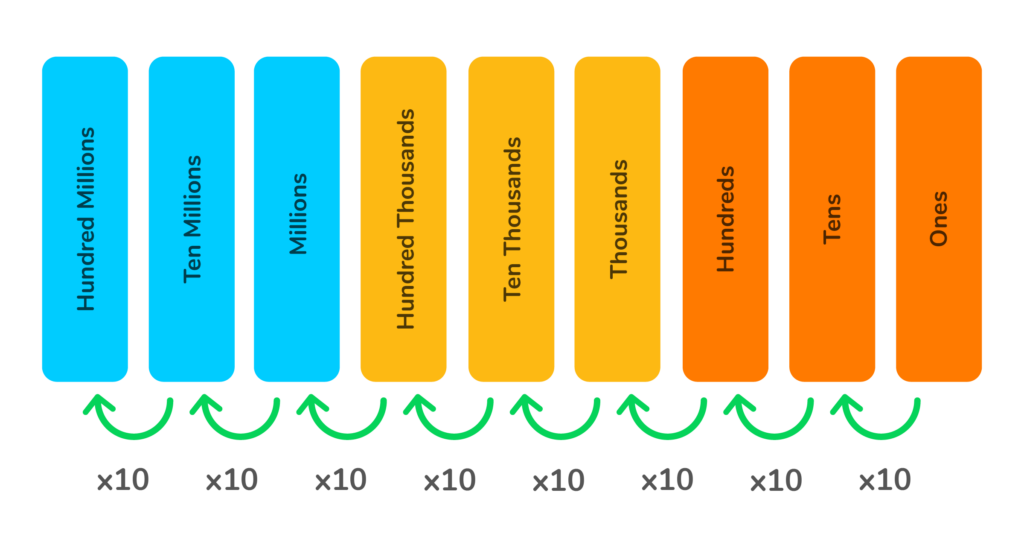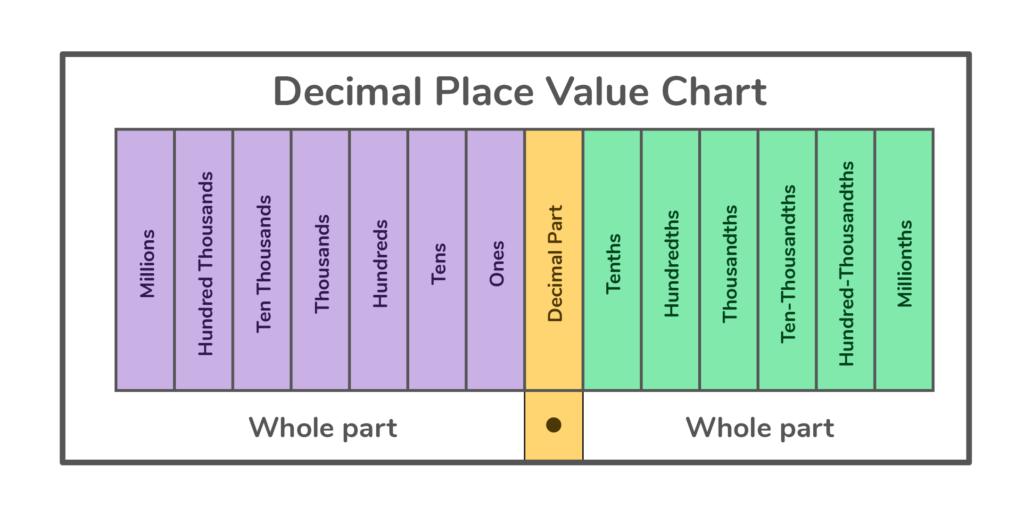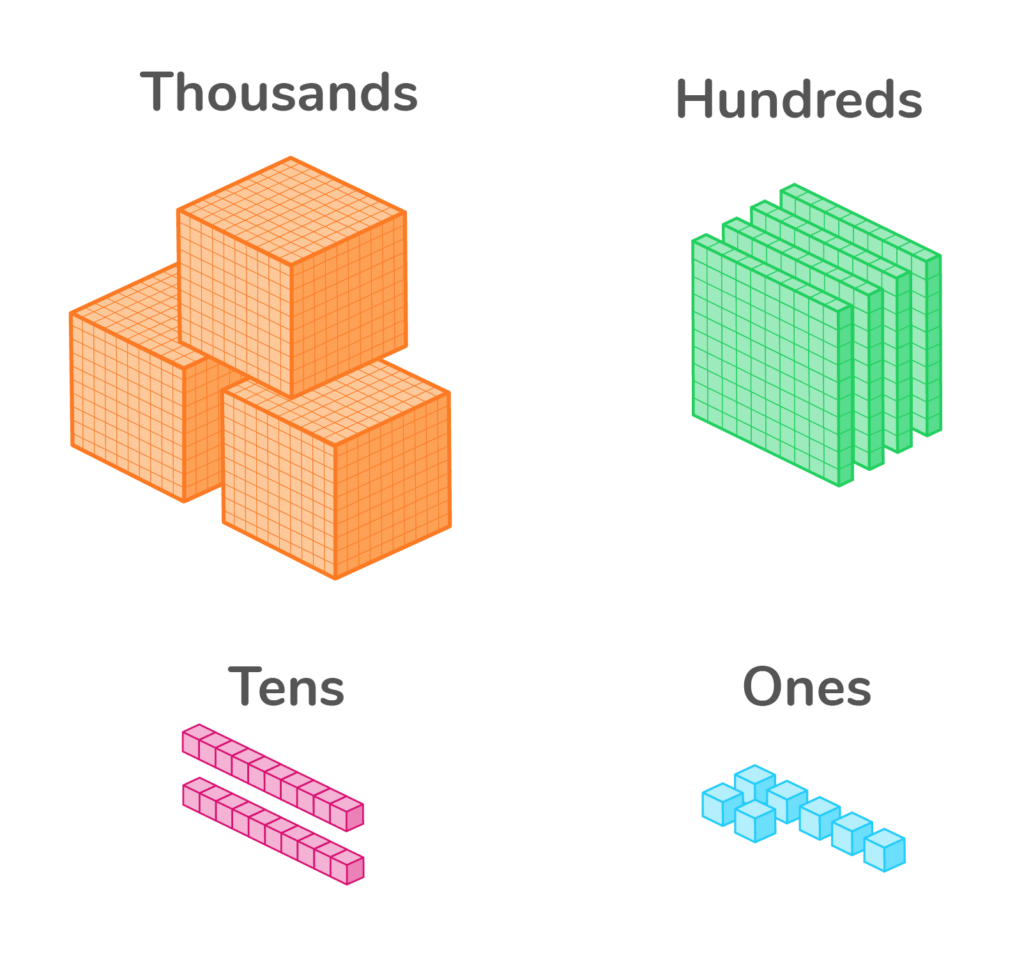

In this guide, learn what place value is and have a go at some questions!

Author
Katie Wickliff
Published
October 25, 2023




In this guide, learn what place value is and have a go at some questions!

Author
Katie Wickliff
Published
Oct 25, 2023


In this guide, learn what place value is and have a go at some questions!

Author
Katie Wickliff
Published
Oct 25, 2023
Key takeaways
Table of contents
In maths, we rely on patterns to help us make sense of our world. In fact, the foundation of our entire number system is place value, which is based on a pattern of tens!
Learning the place value of numbers will help your child or pupils become confident at reading numbers. With this in mind, let’s find out more about them!
Every digit in a number is assigned a place value. Basically, place values determine the worth of digits in a particular number.
Since our single digit numbers are only 1-9, we need place value to show numbers 10 and higher. Each place represents ten times the value of the position to the right.
To better understand place value, let’s look at examples with two numbers: 356 and 5,630.
The place value of 3 in the number 356 is 300. However, the place value of 3 in the number 5,630 is 30. In both numbers, the digit 3 is the same – but its value changes because of its position (or place) in the number.
Place value is also called a base ten system or a decimal system.
It’s much easier to learn about place when using a place value chart.
This kind of table helps learners easily find the place values for each digit in a number. As they practice identifying place value using a place value chart, they’ll develop stronger number sense.
Eventually, they’ll be able to look at a number and quickly determine the place value of each digit without looking at a place value chart.
Children can practice using a chart like the one below or head to our award-winning maths app, DoodleMaths, for even more place value practice!

As this place value chart shows, the value of a digit decreases as we move right to left, and the value of a digit increases as we move left to right.
Let’s take the number 425,123 and use the chart to determine the place value for each digit.
4 is in the hundred thousands place and has a place value of 400,000.
2 is in the ten thousands place and has a place value of 20,000.
5 is in the thousands place and has a place value of 5,000.
1 is in the hundreds place and has a place value of 100.
2 is in the tens place and has a place value of 20.
3 in the ones places and has a place value of 3.
Unlock unlimited maths questions
Put your learning into practice with fun exercises + games that are proven to boost ability!
Want to learn more about place value? DoodleMaths is an app that’s filled with games and questions exploring numbers, shapes and more!
Designed to be used ‘little and often’,* it creates each child a unique work programme tailored to their needs, boosting their confidence and ability in maths.
Best of all, it sets work at just the right level of challenge, letting every child work independently. Try it for free today!

*Earning 24 stars a day in DoodleMaths is proven to double the rate of progression. Read full study

A decimal place value chart helps learners find place values for digits in decimal numbers.
A decimal contains both a whole number and a fractional part. They’re separated by a dot called a decimal point.
In a decimal place value chart, the digits to the left of the decimal point represent the whole number part of the decimal number. The digits to the right of the decimal point represent the fractional part of the number. Each position after the decimal point becomes 10 times smaller!

Let’s use this place value chart with decimals to find the values of the digits in the decimal number 64.2653.
First, let’s look at the digits to the left of the decimal point, 64.
6 is in the tens place and has a place value of 60.
4 is in the ones place and has a place value of 4.
Now, let’s look at the digits to the right of the decimal point, 2653.
2 is in the tenths place and has a place value of 0.2.
6 is in the hundredths place and has a place value of 0.06.
5 is in the thousandths place and has a place value of 0.005.
3 is in the ten-thousandths place and has a place value of 0.0003!
The face value of a digit is how much the digit is actually worth. In contrast, we’ve learned that the place value of a digit is based on its position within the number.
For example, the face value of the digit 2 in the number 524 is 2.
The place value of the digit 2 in the number 524 is 20 (since the 2 is in the tens place).
Base ten blocks, also called place value blocks, are another useful tool to show place value and help students write numbers in expanded forms. By using base ten blocks, students can easily visualise a number’s size.
Base ten blocks come in four types: unit blocks represent ones, rods represent tens, flats show hundreds, and cubes show thousands.

Try DoodleMaths for free!
Select a year group
Click on each box for the answer!
5 is in the thousands place.
7 is in the tenths place and has a value of 0.7
5
3,496
The place value of a number is the value of the number in a particular position.
An example of place value is the number 7 in 783 representing 7 tens, or 70.
Place value is important because it forms the basis of our whole number system. Since our single digit numbers only go up to 9, we need place value to show larger numbers.
Place value increases as it moves to the left.

How to multiply fractions
Take your learning further by exploring how to multiply fractions
How to improve at mental maths
Learn some handy mental maths strategies that’ll make addition a breeze!
Lesson credits

Katie Wickliff
Katie holds a master’s degree in Education and a bachelor’s degree in both Journalism and English. She has over 15 years of education experience as a teacher and certified tutor. Most importantly, Katie is the mother of two children, ages 8 and 11. She is passionate about education and firmly believes that the right tools and support will help every student reach their full potential.

Katie Wickliff
Katie holds a master’s degree in Education and a bachelor’s degree in both Journalism and English. She has over 15 years of education experience as a teacher and certified tutor. Most importantly, Katie is the mother of two children, ages 8 and 11. She is passionate about education and firmly believes that the right tools and support will help every student reach their full potential.
Book a chat with our team
If you’d like to use Doodle’s browser version, please visit this page on a desktop.
To log in to Doodle on this device, you can do so through our apps. You can find out how to download them here: